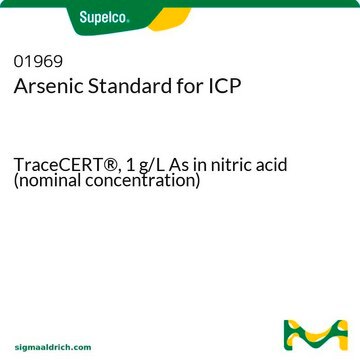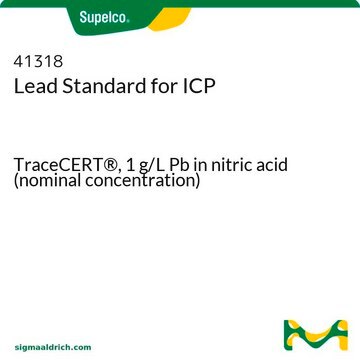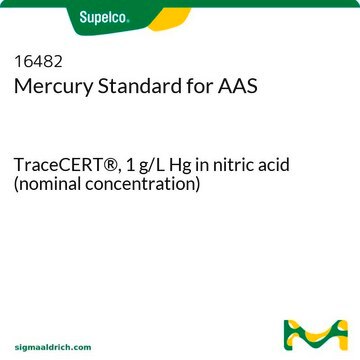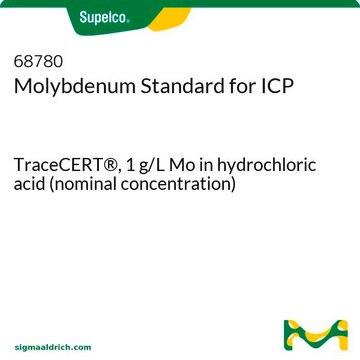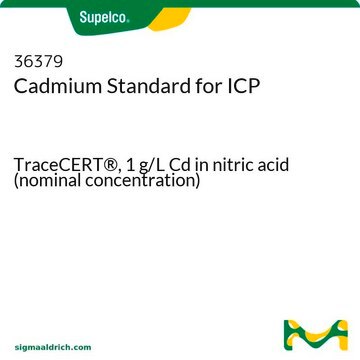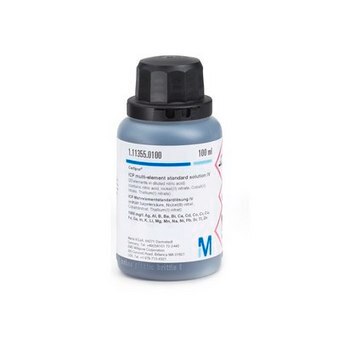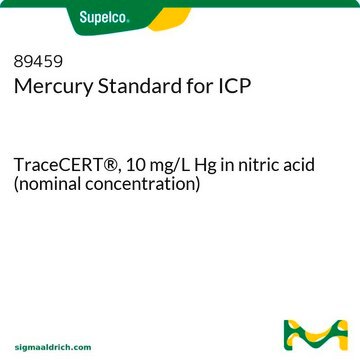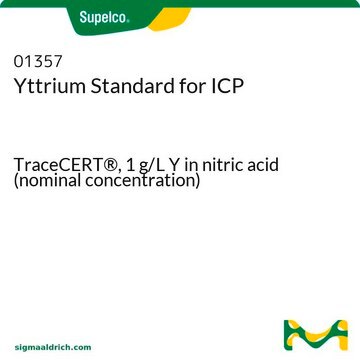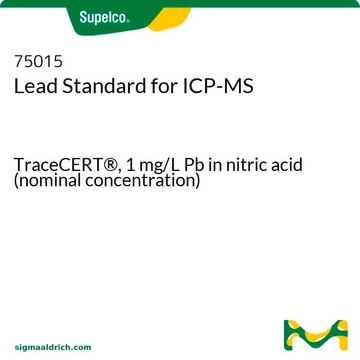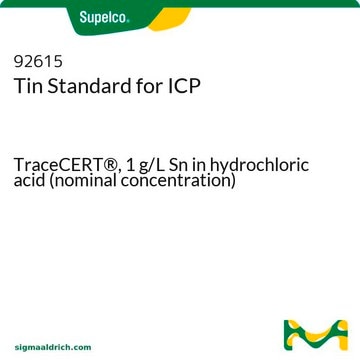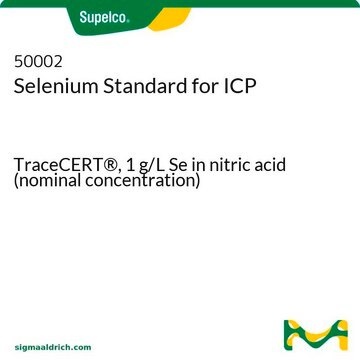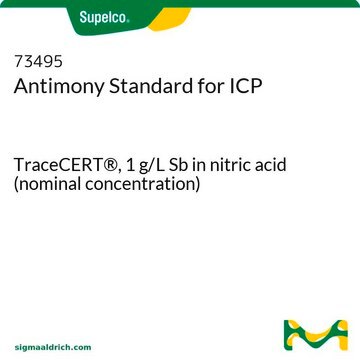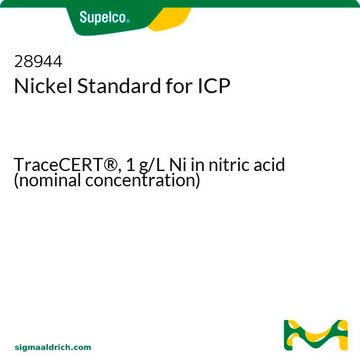28941
Mercury Standard for ICP
TraceCERT®, 1 g/L Hg in nitric acid (nominal concentration)
About This Item
Recommended Products
grade
certified reference material
TraceCERT®
Quality Level
product line
TraceCERT®
concentration
1 g/L Hg in nitric acid (nominal concentration)
technique(s)
ICP: suitable
application(s)
agriculture
cleaning products
cosmetics
environmental
food and beverages
personal care
format
single component solution
General description
Please visit ISO certificates and Site Quality Self-Assessments to access the current certificates of accreditation.
Download your certificate at http://www.sigma-aldrich.com to view certified values, including uncertainty and expiry date.
Application
Analysis Note
Other Notes
Legal Information
Signal Word
Danger
Hazard Statements
Precautionary Statements
Hazard Classifications
Acute Tox. 4 Inhalation - Aquatic Chronic 3 - Eye Dam. 1 - Met. Corr. 1 - Skin Corr. 1B - STOT RE 2
Target Organs
Kidney
Supplementary Hazards
WGK
WGK 2
Flash Point(F)
Not applicable
Flash Point(C)
Not applicable
Personal Protective Equipment
Choose from one of the most recent versions:
Already Own This Product?
Find documentation for the products that you have recently purchased in the Document Library.
Customers Also Viewed
Articles
Testing for heavy metals in food and beverages? You understand that prolonged trace exposure to heavy metals such as arsenic (As), cadmium (Cd), chromium (Cr), lead (Pb), mercury (Hg), and thallium (Tl), via the food, beverages and drinking water we consume can cause serious health risks. Fortunately, increasingly sensitive tests are in place to ensure our food is safe. Discover the recent advances in analytical technologies for heavy metal detection and the products, services and technical support available to help you keep us all safe. Because we all want to trust what we eat.
Our team of scientists has experience in all areas of research including Life Science, Material Science, Chemical Synthesis, Chromatography, Analytical and many others.
Contact Technical Service